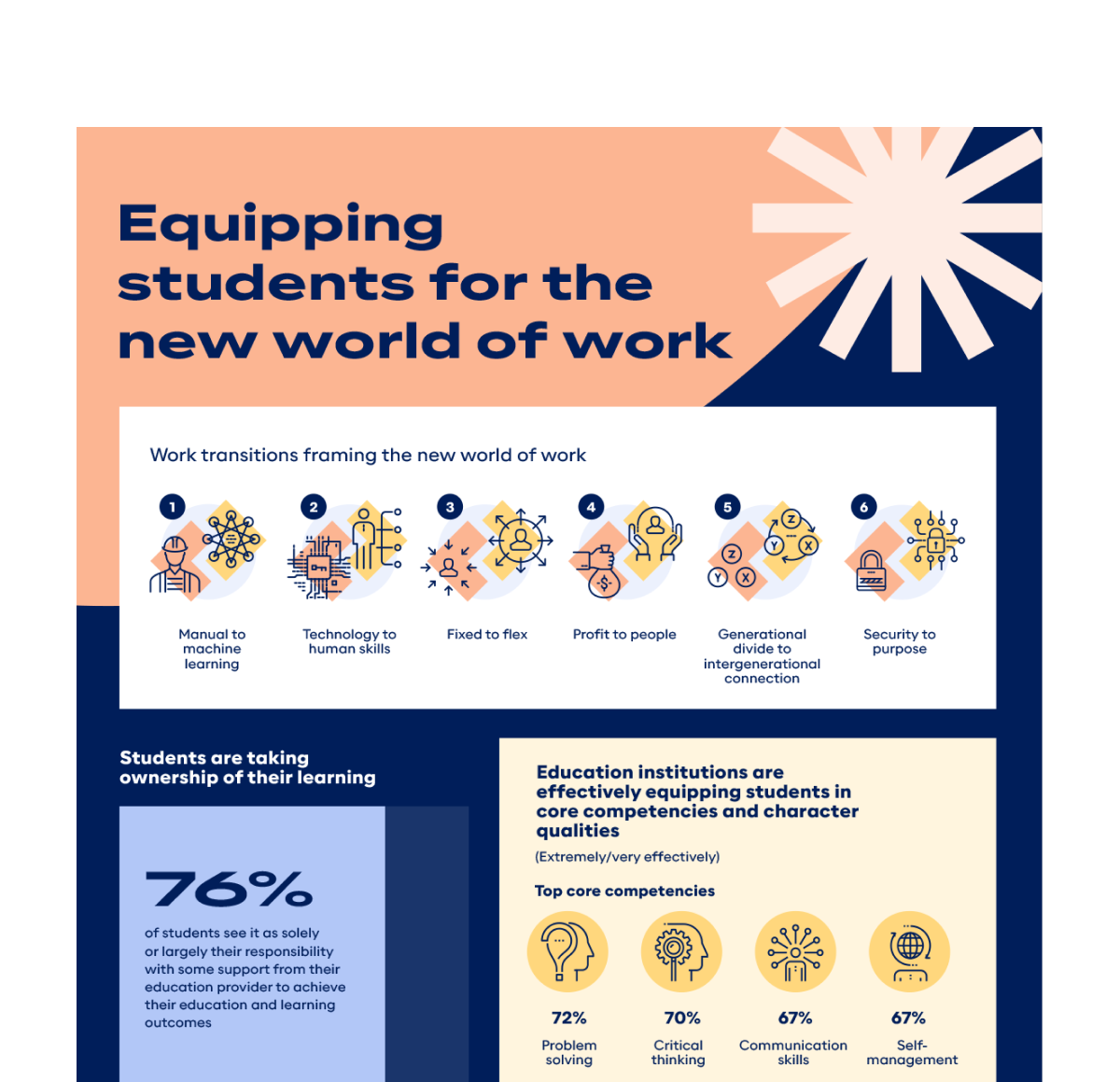Results from the Education Future Report 2016

Australians are more educated today than they have been at any other point in history. The number of students completing undergraduate and postgraduate courses today is on the rise and for the first time in Australian history more than half the population aged 15-64 have a post-secondary qualification (51%). Over 70% of the newest wave of high school graduates, Generation Z, are pursuing further education and training, with almost half of them going on to university. How is today’s education system providing for this Generation of lifelong learners? This Friday we are looking forward to co-hosting the Education Future Forum with SCIL, to provide an overview of the current and future trends impacting the Education Sector. Here is a snapshot of some of the current and future trends in primary and secondary schools across Australia, from our Education Future Report 2016, which will be shared in detail at this Friday’s event.
More students than ever before
Australia currently has more students enrolled in full-time education than ever before. In 2015 there were 3,730,694 students enrolled in Australian schools. This is a 1.5% increase from 2014 and a significant 14% increase from 2001.
Since 2001, the growth in the total number of students (14%) has far outweighed the growth of actual schools (2%), the result of which has been growth in larger schools (801+ students for primary and 1200+ for secondary). The nature of these growing schools is changing as well, with more students enrolling in Independent schools than ever before.
Increasing number of private school enrolments
Since the 1970s there has been a significant rise in the proportion of students enrolling in non-government schools. Whereas non-government schools educated only 22% of all students in 1970, by 2015 that figure had risen to over a third (35%).
While government schools continue to educate the majority of Australian students (65%), enrolments at Catholic (21%) and Independent (14%) schools are on the rise and show that Australians value choice, and today’s parents are prepared to pay for an education if they feel it will align more closely with their values, expectations, and aspirations.
13% growth in teachers since 2015
In 2015, there were 382,687 full-time equivalent teaching staff over primary and secondary schools in Australia, which is a growth of 13% since 2005. Of these, 240,882 (63%) taught in Government schools, 72,812 (19%) taught in Catholic schools and 68,994 (18%) in independent schools.
The total number of male teachers has grown between 2005 and 2015 by 3% compared to 18% growth in female teachers over the same period. Comparatively, Government schools have a lower percentage of male teachers than Catholic and Independent schools.





